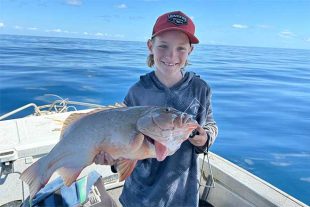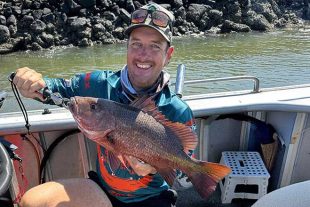The study of fish ear bones, or otoliths, provides a fascinating window into the aquatic world – similar to how dendrology, the study of tree rings, offers insights into terrestrial environments.
Otoliths record valuable data about the life of a fish.
These calcium carbonate structures reside in the head of fish and grow in layers throughout a fish’s life.
Each layer represents a specific period of growth, revealing not only the age of the fish but also insights into their living conditions.
On the latest episode of OzCast, Professor Lee Baumgartner unveiled his research into otoliths, which details remarkable stories about fish populations.
Intriguingly, fish, being cold-blooded, lay down rings at different rates throughout the year, influenced by environmental conditions.
But otoliths hold more secrets than only age.
They encapsulate the chemical composition of the water in which the fish lived, effectively recording the environmental conditions at specific times.
This capability allows scientists to construct a detailed timeline of a fish’s life, including where it lived and the quality of water it inhabited.

A significant revelation from Lee’s study was the discovery of extensive migration patterns among fish populations.
For instance, many fish found dead in the southern basin of the Murray River, particularly around Deniliquin and Echuca, were born in the Darling River.
These fish had migrated from their birthplace in the Darling River to the Murray River as larvae, then moved upstream.
This finding underscores the interconnectivity of river systems and the importance of considering these connections in environmental management and conservation efforts.
The insights gained from otolith analysis are invaluable for understanding fish populations and managing aquatic ecosystems.
By revealing the life history and migration routes of fish, otoliths help in tracking the health and diversity of fish communities.
This knowledge is crucial for conservation efforts, particularly in regions where water systems are heavily impacted by human activities.
As we continue to explore these ‘rings of the aquatic world’, we gain a deeper understanding of our waterways and the diverse life they support, guiding us towards more informed and effective conservation strategies.
Visit ozfish.org.au for more information.
 Bush ‘n Beach Fishing Magazine Location reports & tips for fishing, boating, camping, kayaking, 4WDing in Queensland and Northern NSW
Bush ‘n Beach Fishing Magazine Location reports & tips for fishing, boating, camping, kayaking, 4WDing in Queensland and Northern NSW









